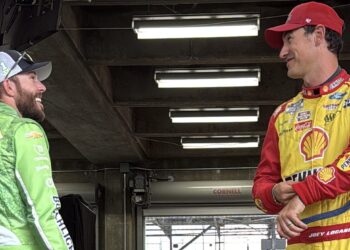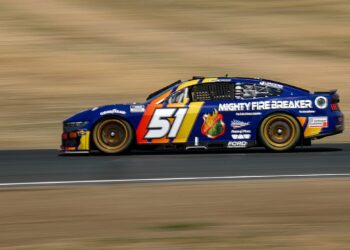In a sport dominated by headlines about champions and front-runners, Ty Dillon’s perspective on NASCAR’s new In-Season Challenge brings a refreshing spotlight to the heart of the grid — the mid-field drivers who grind week in and week out with little of the fanfare that follows the big stars. As the sport evolves to keep fans engaged throughout a long season, NASCAR’s innovative In-Season Challenge aims to add extra stakes to races that might otherwise blend into the calendar. Dillon, a veteran of the garage and a voice for many who fight for every top-20 finish, recently sat down to answer 12 questions about the new format, the mid-field battle, and what keeps him motivated behind the wheel.
1. How do you feel about NASCAR’s In-Season Challenge?
Dillon welcomes the new format wholeheartedly. “For us drivers in the middle of the pack, this Challenge is a chance to get recognition and earn something extra for the team,” he says. He explains that while the top teams are often out of reach week-to-week, a mini-competition gives everyone new goals.
2. What impact will it have on your approach to races?
“It changes the mindset,” Dillon admits. He describes how every point, every position, and every pit stop now carries more meaning. “You can’t just ride around hoping for luck — you have to race guys you might normally not battle so aggressively.”
3. Do you think it helps level the playing field?
Dillon is realistic. “We’re not going to suddenly beat Hendrick or Gibbs every week,” he says, smiling. “But it’s an equalizer in terms of motivation and reward. Smaller teams need incentives like this to justify extra risk-taking.”
4. How do your crew and sponsors see it?
According to Dillon, his crew loves it. “The guys in the garage work as hard as any winning team. They deserve to feel like they’re fighting for something big.” Sponsors also appreciate more exposure opportunities when their cars get airtime battling for Challenge points.
5. Which mid-field drivers could shine with this format?
Dillon points out drivers like Corey LaJoie and Justin Haley as ones to watch. “These guys are talented, but they’re in equipment that can’t always compete for wins. Give them a trophy to chase in the middle of the season, and you’ll see them go all out.”
6. Does it add pressure or make racing more fun?
“Both,” Dillon laughs. “You’re more stressed about every position, but that’s what we signed up for. Fans want excitement, so it pushes us to deliver.”
7. What’s the vibe like among drivers about it?
There’s been plenty of garage chatter, Dillon says. “Some guys think it’s gimmicky. Others, especially those not in the Playoff picture every year, love it. Most agree it’s better than meaningless mid-season laps.”
8. Any changes you’d make?
Dillon suggests tweaking the points payout. “It shouldn’t only reward top-10s. If it’s for mid-field guys, then finishing 15th or 20th should still get you something. Make it fair.”
9. How do you stay motivated when you’re not in Playoff contention?
This Challenge is exactly the kind of boost mid-field drivers need, Dillon explains. “Motivation comes from the crew’s effort and my love of racing. But having a side trophy to chase helps more than people know.”
10. How does the Challenge connect with fans?
Dillon thinks it’s good for storytelling. “Fans love underdog stories — look at March Madness or the NFL Wild Card teams. If I can fight for a mid-season prize and bring my fans along for that ride, that’s a win.”
11. How do you balance risk and reward?
He admits the line is thin. “Wrecking the car for one extra point isn’t smart if it costs you in the next race. But if it’s the difference between P12 and P15 in the Challenge standings, you might push a little harder.”
12. Where do you see NASCAR going with ideas like this?
Dillon believes it’s a sign NASCAR is listening. “The sport is evolving. We can’t just stick to what worked in 1995. If new formats keep fans excited and help teams like ours stay relevant, I’m all for it.”
A New Chapter for the Forgotten Battles
Ty Dillon’s candid take on the In-Season Challenge highlights an important truth about NASCAR: the storylines in the middle of the pack are often overlooked, yet they are where some of the grittiest racing happens. These are drivers with smaller budgets, fewer headlines, but the same hunger as the sport’s elite. Dillon’s optimism for the Challenge is a reminder that racing is more than just checkered flags and championship banners — it’s about the everyday fight, the people who make it happen, and the fans who care just as much about the guy in P15 as the one in Victory Lane.
As NASCAR continues to experiment, drivers like Ty Dillon prove that there’s an appetite for new ways to reward the entire field. The In-Season Challenge may not change who hoists the Cup at Phoenix, but it might just make those long summer races more thr
illing for drivers, teams, and fans alike.











